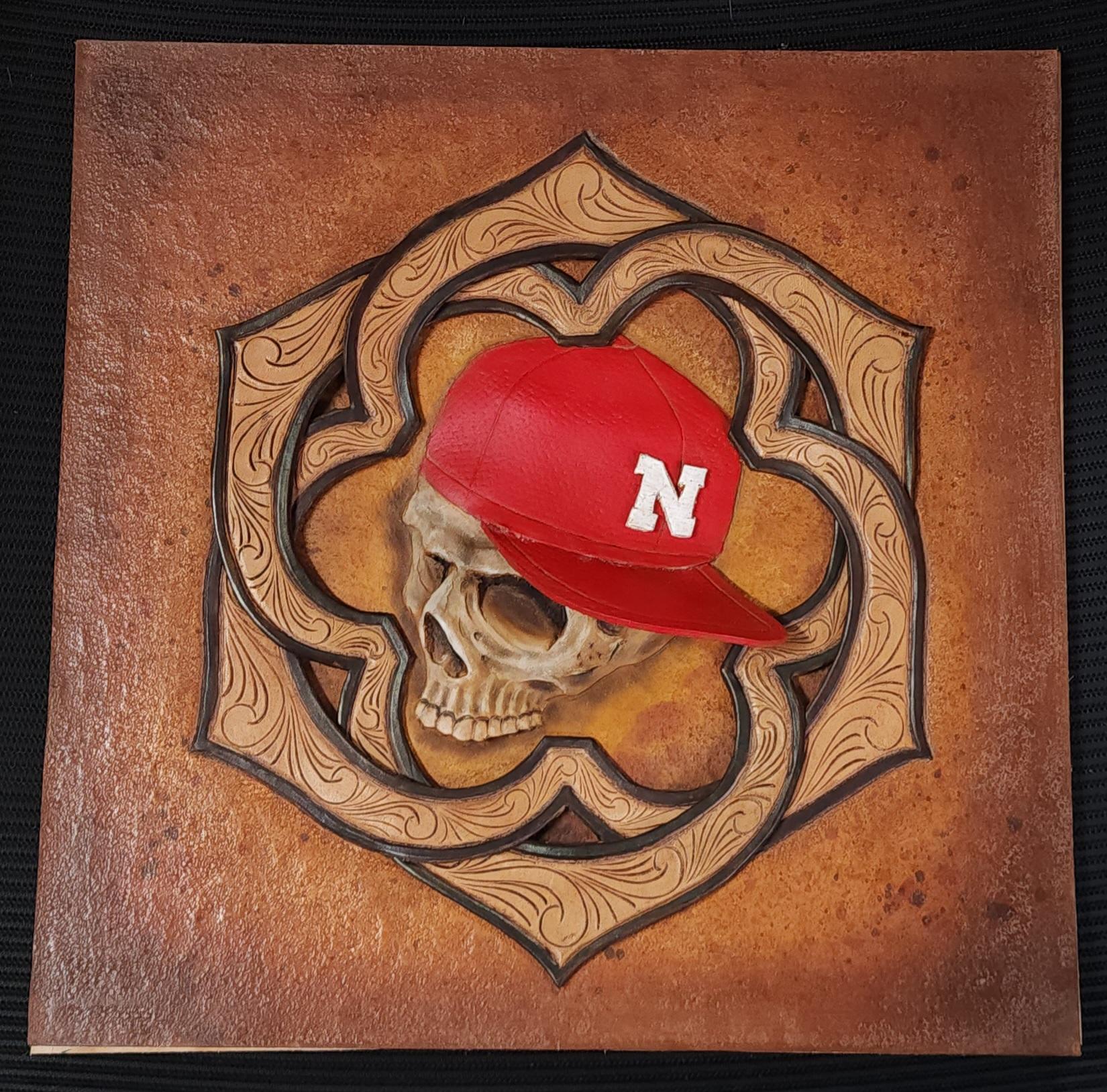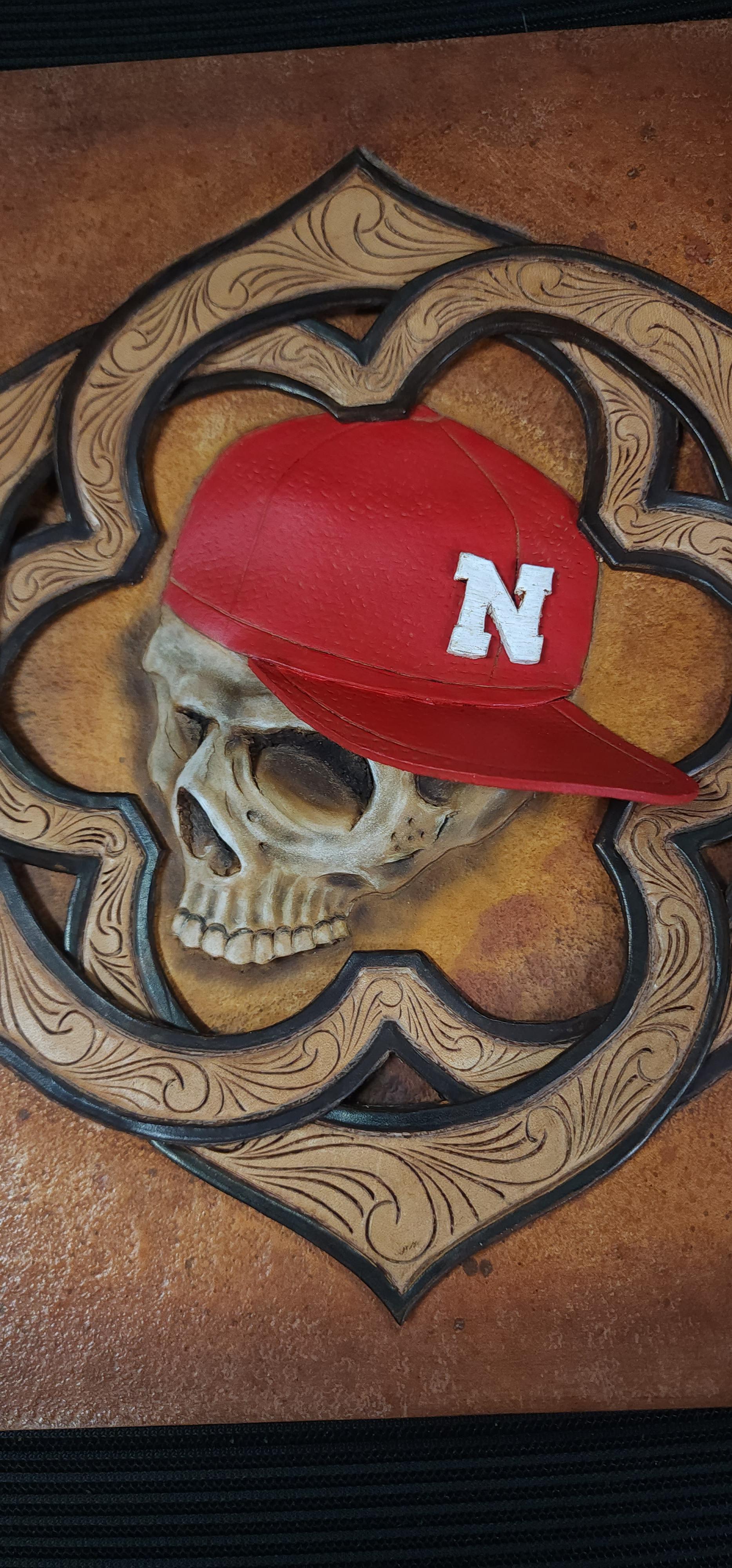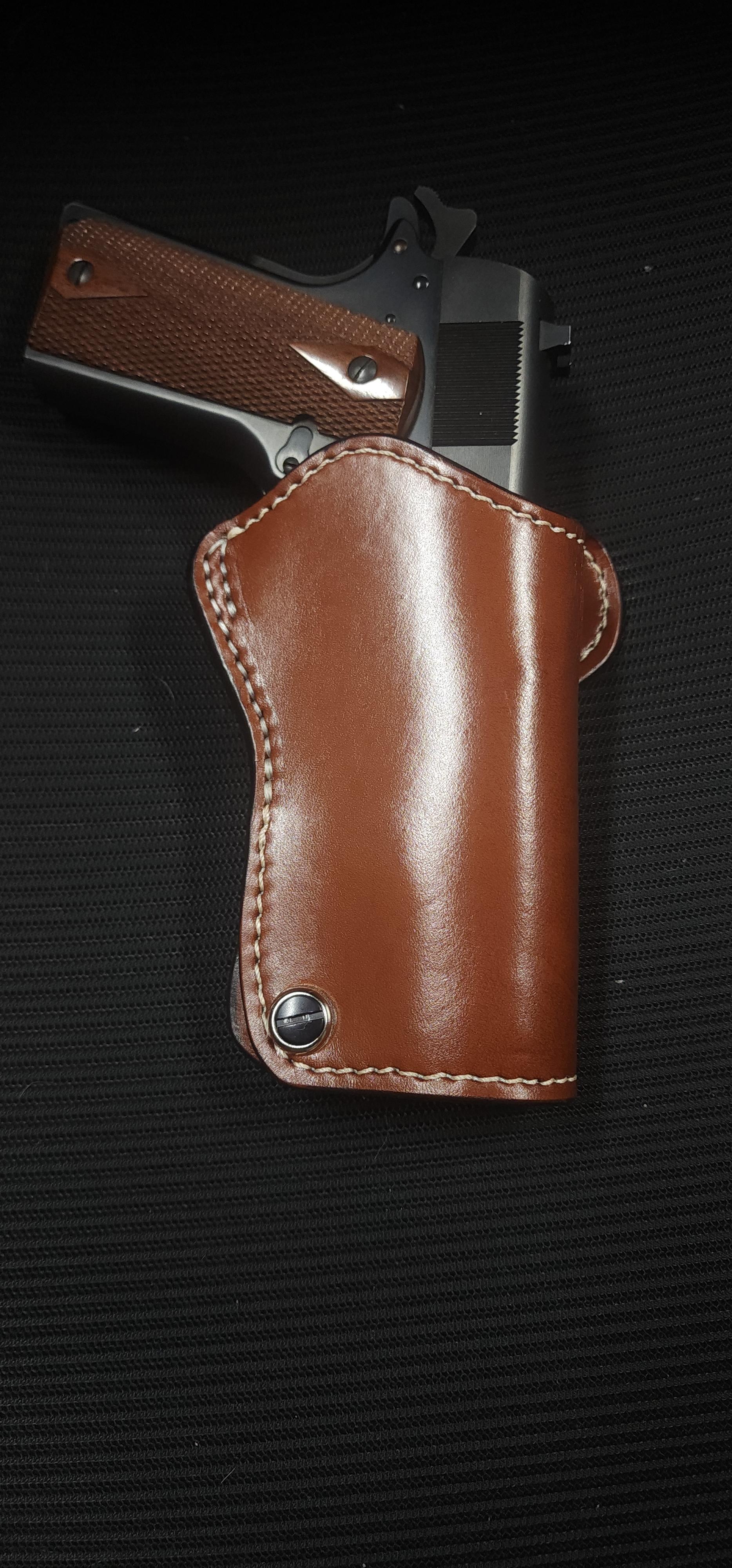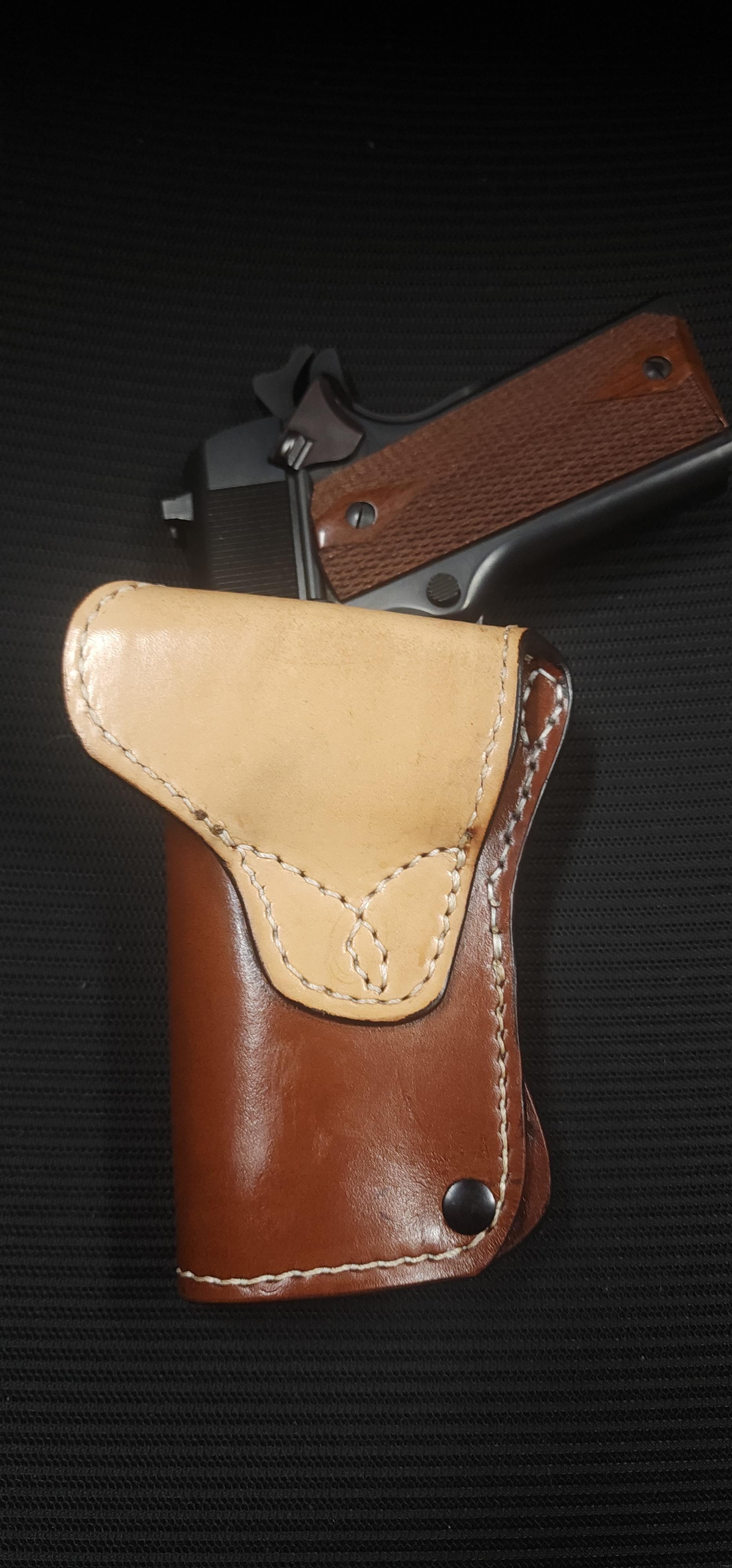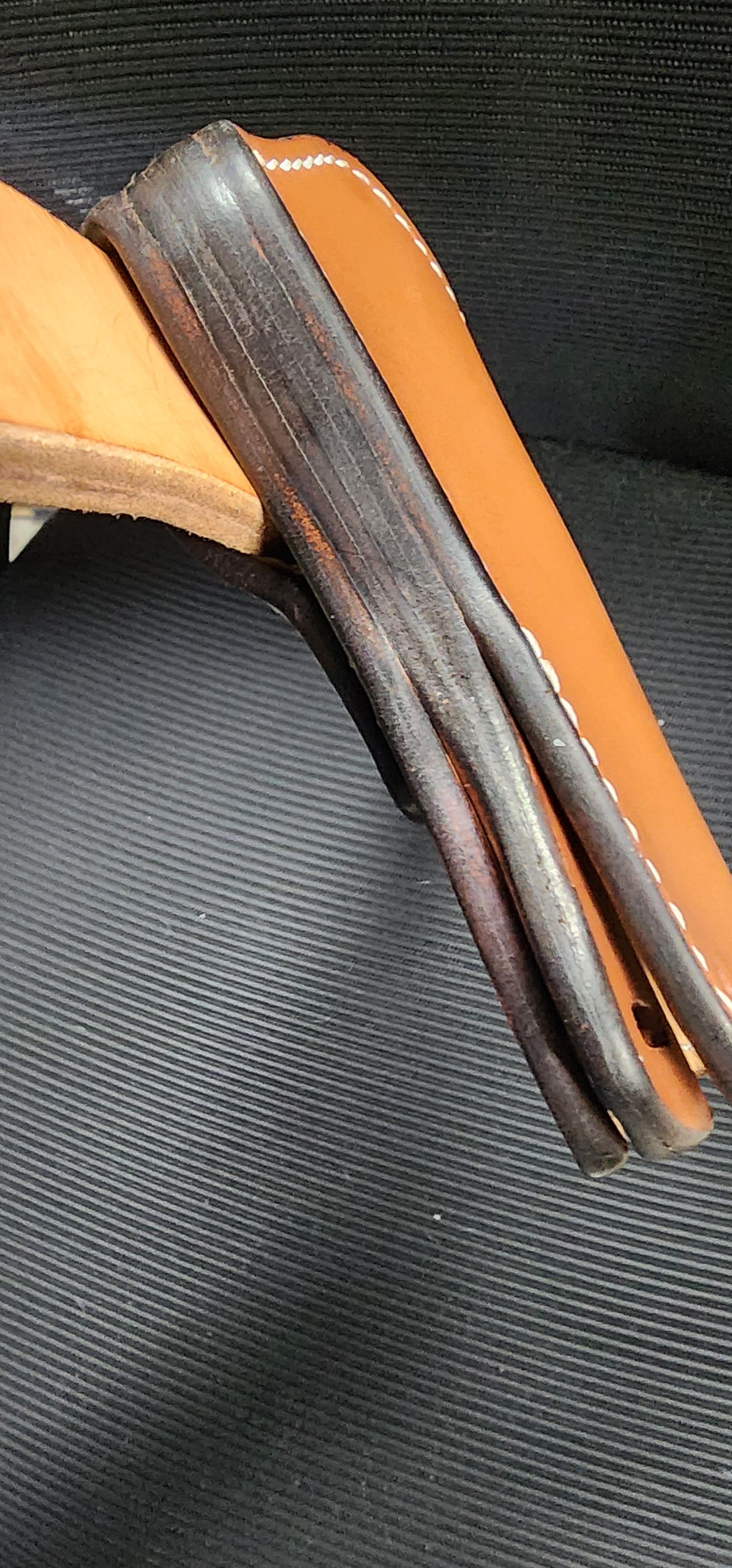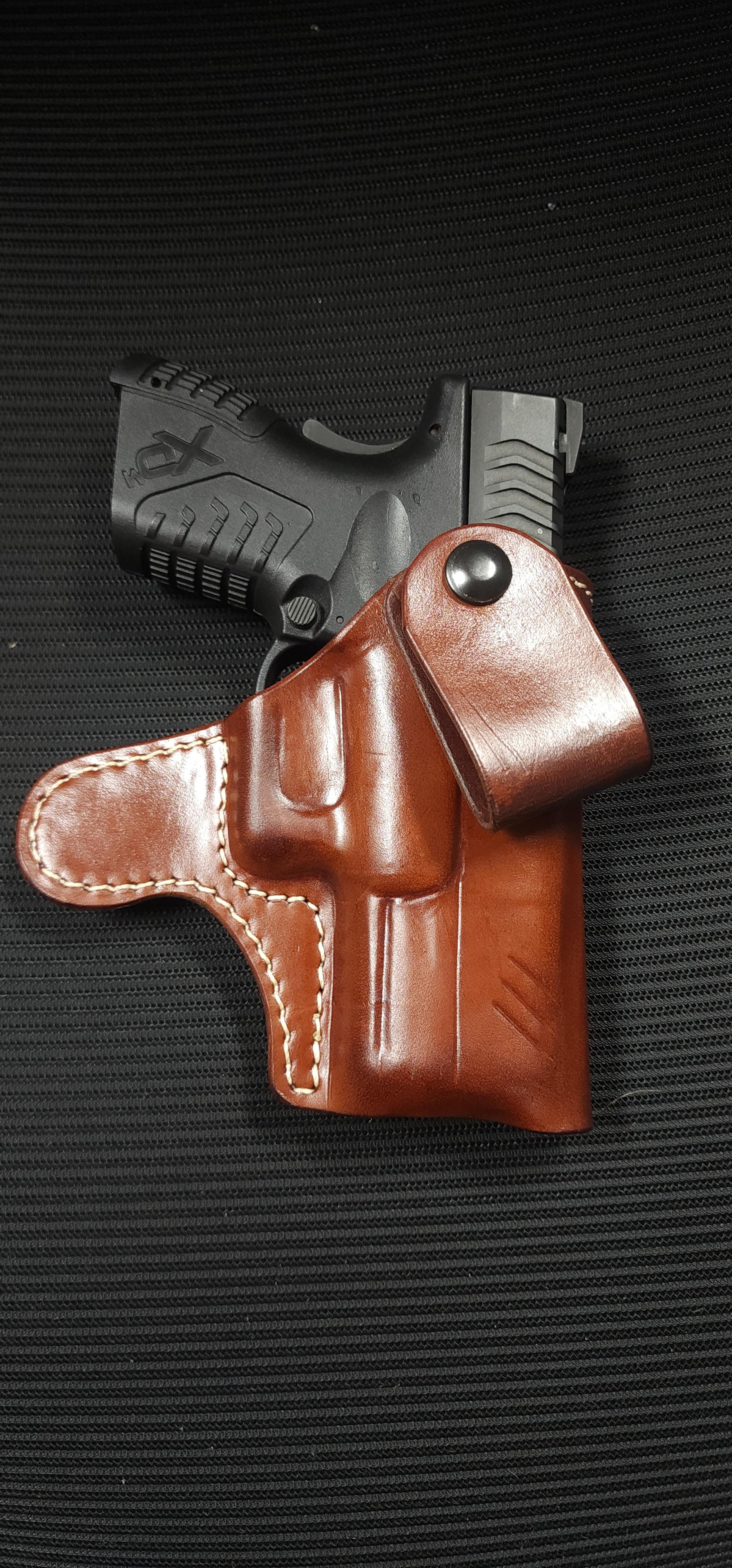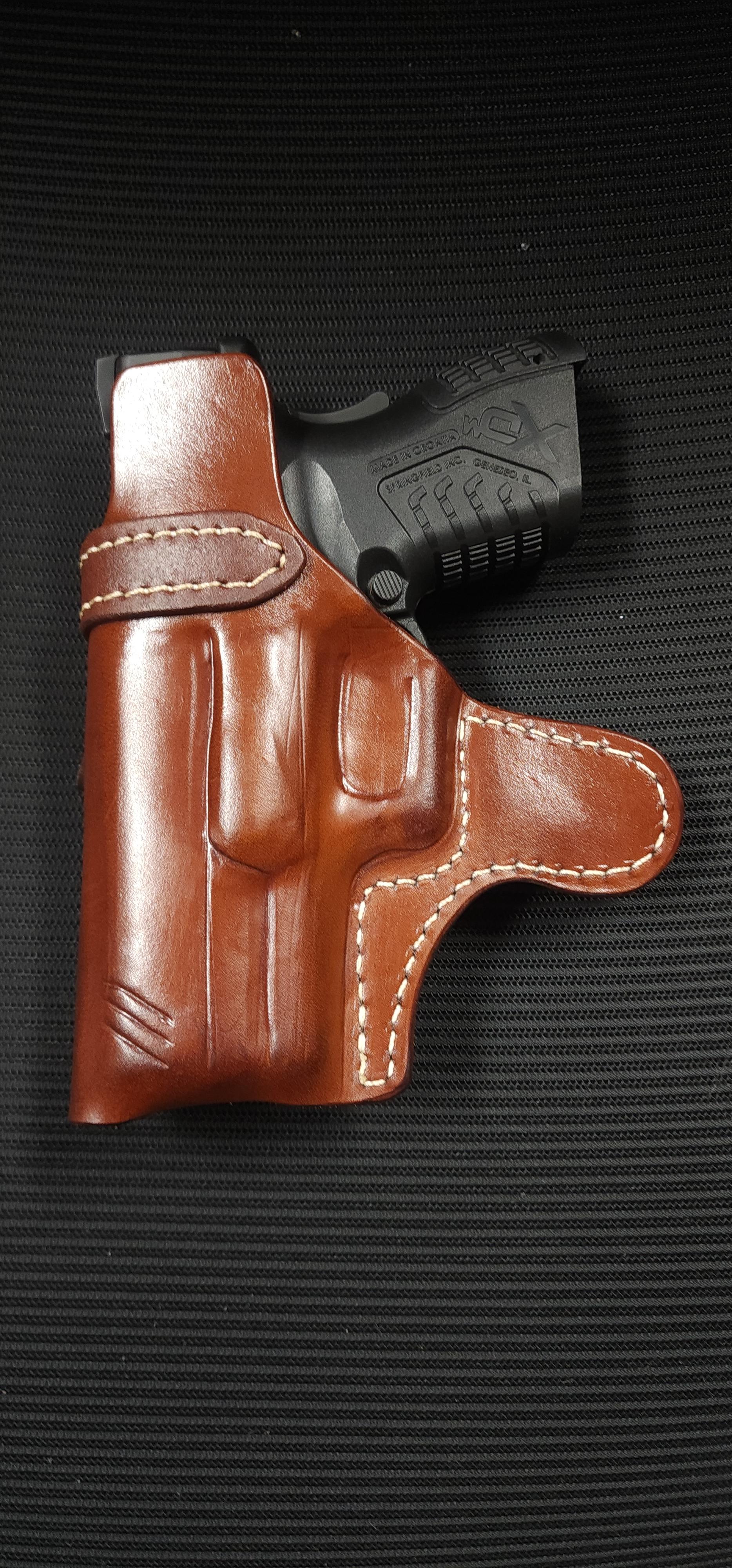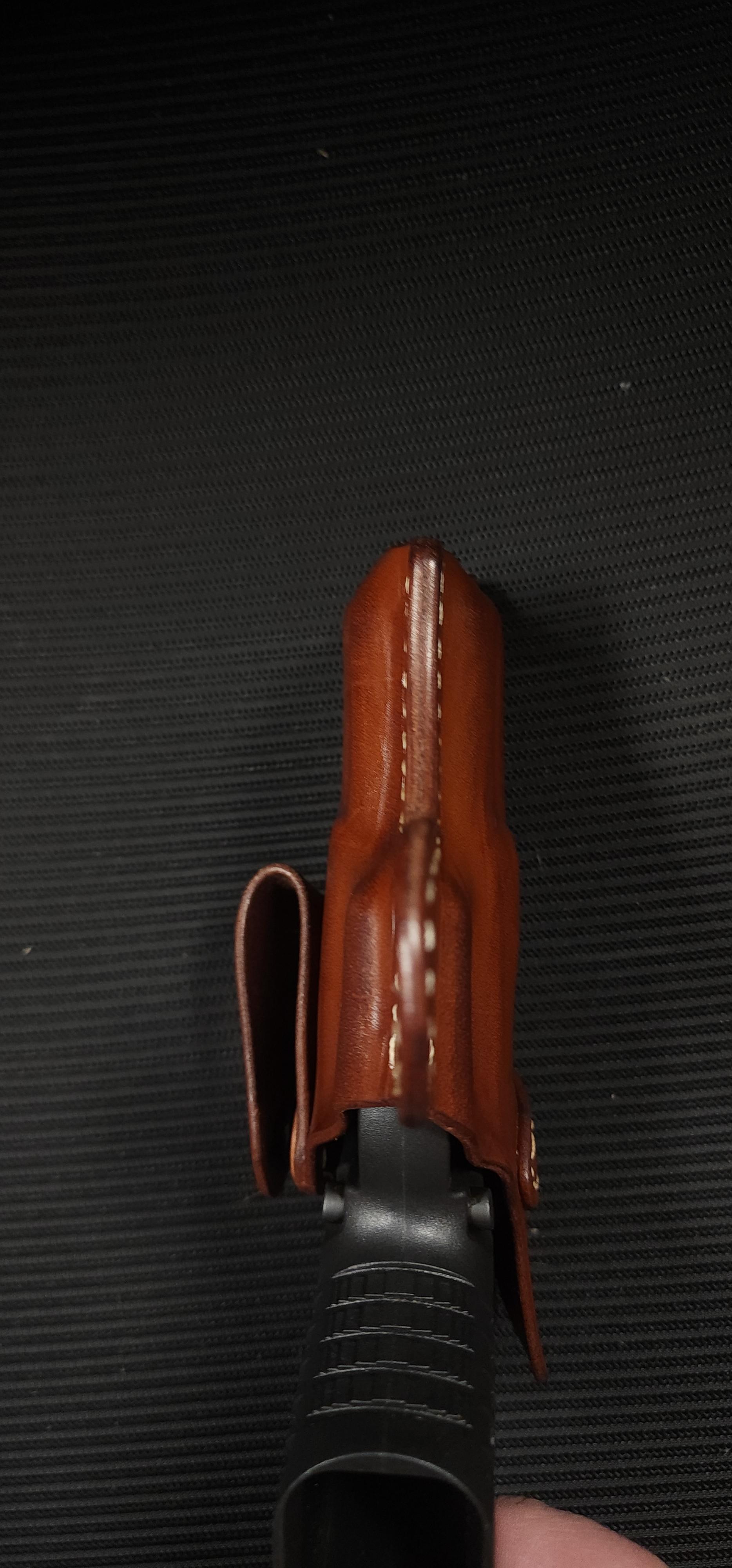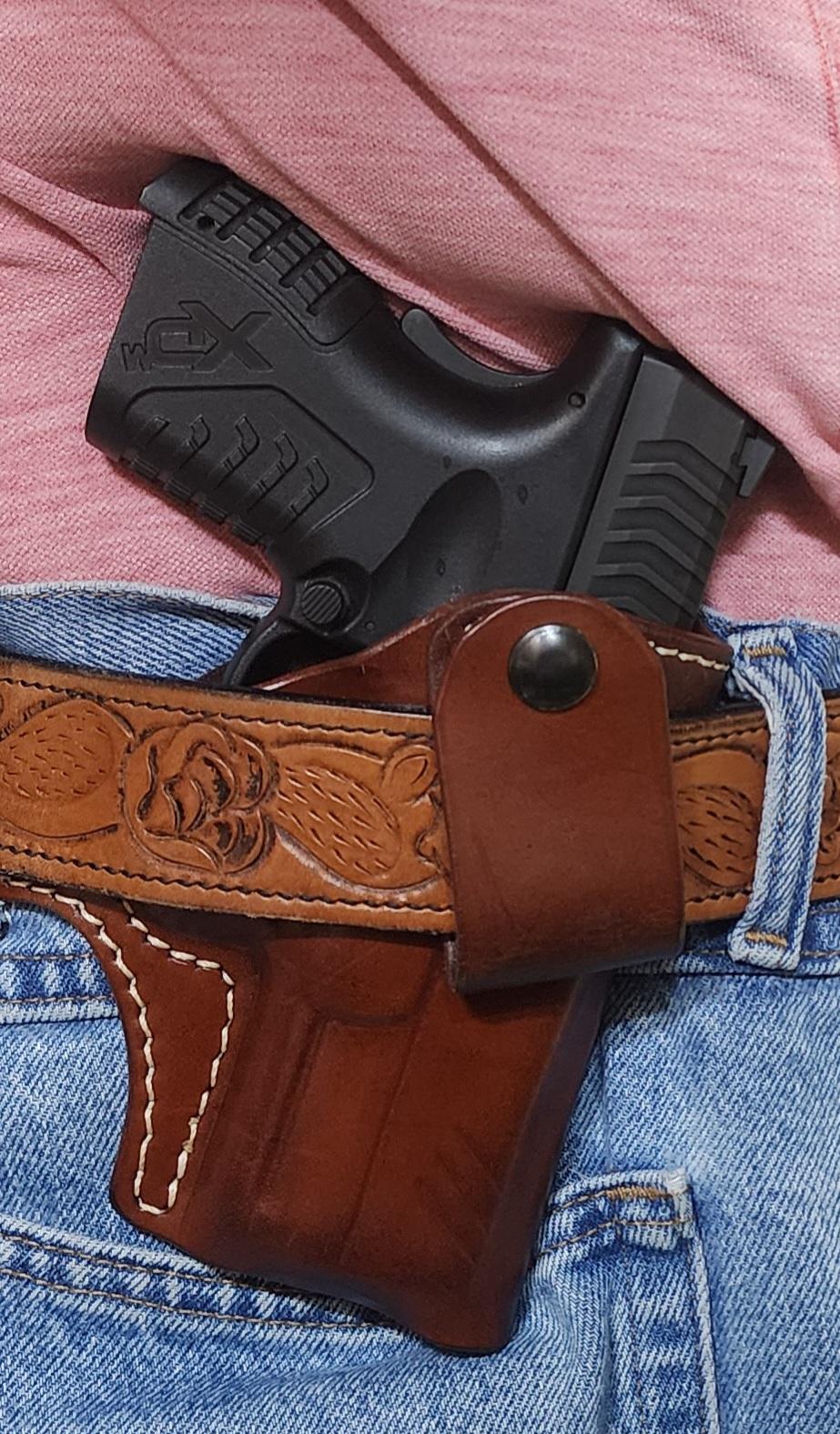-
Posts
1,431 -
Joined
-
Last visited
Content Type
Profiles
Forums
Events
Blogs
Gallery
Everything posted by Stetson912
-
It is my understanding that the fridge isnt doing anything for keeping moisture in. Its the bag. The fridge just delays molding. If youre doing a project that you'll have to come back too a bag should suffice fine. If it will be a few days then I'd stick it in the fridge. Peter main has a bigh sheet of tempered glass he uses. He would wet the leather and stick the glass on top and it would stay cased as long as he needed it too right on his bench. I believe this works because Moisture isnt lost much through the edges but the grain. Thats just my theory though
-
Thanks
-
Thanks it was fun and challenging. Its a cool effect too. when I saw jurgens in Florence a few years ago I was dumbfounded and didnt know how it was put together. Then I learned how its done and its simpler than it looks. Its on learn with illume if youre interested.
-
It took me a week to do but im happy with it, my dad is a nebraska fan so, I figured it would be a good Christmas gift. This challenged me on many levels but I like how it came out, and that rarely happens haha. Hope you like it, cheers!
-
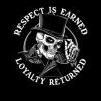
Interesting Holster Project
Stetson912 replied to MarlinDave's topic in Gun Holsters, Rifle Slings and Knife Sheathes
Well along with the 2 layers of 6/7 oz (my personal favorite option) and the patch idea, id also suggest possibly making a loop style cowboy rig. You could attach the button to the loop and not have to line the holster if thats an issue. I know it alters the design but its another option. -

My version of Milt sparks 1-at
Stetson912 replied to Stetson912's topic in Gun Holsters, Rifle Slings and Knife Sheathes
Thanks. The view of the welt was before finishing. I forgot to mention that. It was an interesting build for sure. -
I went down this rabbit hole, it was fun. I need to order better hardware but you get the point. The 1at by milt sparks has an oddly shaped adjustable welt that adjusts tension. This is for a 5" 1911. It is a behemoth with the body being 2 layers of 6/7 oz and the welt is 4 layers for a total of 8 at the thickest part (about.75" thick). It also has sewn in sight rails that was interesting. I sewed them to the liner so you cant see them on the front. Im not a fan of hand stitching that welt either, but we do what is necessary haha.
-
As @KillDevilBill was saying , and how I understand it. The laminated leather has 2 layers of full grain which is the strongest part of the leather. And they would be in different directions adding strength similar to how a weave or braid does.maybe better would be something like plywood. The layers are laid in opposing directions allowing for a strong end material. And the contact cement itself is strong in its own right and probably adds a bit to the overall strength of the laminated leather.
-
Chris Andre does his with 2 layers of equal weight. I do this when I want a lined holster and I can say it is very stiff. My method is different than Dwight. I just glue 2 layers together and treat it as I would normally. I haven't read the article but I do know bianchi was a fan of using suede linings, in which case would be lighter in weight and adhered to the heavier holster body. I'd recommend 2 layers if 4/5 oz for owb and 3/4 for iwb.
-

New Knife Sheaths
Stetson912 replied to Dwight's topic in Gun Holsters, Rifle Slings and Knife Sheathes
Nice collection there -

Between belt and pants
Stetson912 replied to Stetson912's topic in Gun Holsters, Rifle Slings and Knife Sheathes
I don50/50 on pancakes. The only time I think the offset molding would benefit on a pancake is if the feller is very thin. Even then, i keep my slots relatively close to the gun. About 1" to center of the slot. This xdm is quite a brick. Im looking into better carry weapons at the moment. It doesnt fit my fat hands either. The digging wasn't too bad but I agree I can extend the sweat guard a bit more. I've seen some reverse avenger style bbp holsters without the wing. That I think would allow more versatility in placement, but I like the thought of the wing helping keep things in place even though its mostly the belt -

Between belt and pants
Stetson912 replied to Stetson912's topic in Gun Holsters, Rifle Slings and Knife Sheathes
Nice. I made a bag and have an old vac pump. Its more finding space to use it. I have to clear my bench off and its a pain to have to do that. One day ill figure something out space wise haha. There's never enough of it it seems. I might look into the vac bags like that, as it is I have to continuously run the pump so, might be better anyway -

Between belt and pants
Stetson912 replied to Stetson912's topic in Gun Holsters, Rifle Slings and Knife Sheathes
@Dwight I will give it a try. I tend to lean more 80/20 on iwb/bbp but haven't tried all flat. I used my cowboy outlaw to stitch it. I have a diy vacuum press but its a pain to drag out and set up. More often than not i hand mold. I am trying to build up that skill but there's only so much you can do with a brick like this xdm. @wizard of tragacanth thanks for the suggestions. Ill try on the next one without molding inside the trigger. The sweat shield i made short to prevent foldover. I usually make them too long but I can tweak that some too. -
Del fatti inspired my design here. I think its more comfortable that traditional iwb. I used 6/7oz holster strap from ALD and resolene finish. It is what i call a semi-flatback where the front is molded more than the back so it wont dig so bad
-

Chest rig for a S&W 7.5 in 44mag
Stetson912 replied to Hags's topic in Gun Holsters, Rifle Slings and Knife Sheathes
Nice -
I agree. Comfort and security/ function should come together to make a good holster. It's subjective to each person but those comments let you know you did a good job.im Im always learning but finding ways to make iwb comfortable is a challenge. Especially for myself being a tub o lard haha!
-
Thanks, I think ive got the method figured out, im going to see about making one for my other auto. It is a nice design and pretty unique in think
-
This is 6/7oz (thats why the detail is crisp like it is). The built in s curve reinforces everything allowing the use of lighter leather. Because of that and the curved front edge, its the most comfortable holster ive worn or made. I can move around and sit with it no problem and I hardly know its there. Im a big guy so everything iwb kinda pokes and prods but this one is much more comfortable in comparison, and this is a full size 1911 too.
-

Railed sig 1911 bbq rig
Stetson912 replied to Stetson912's topic in Gun Holsters, Rifle Slings and Knife Sheathes
Looks good -

Railed sig 1911 bbq rig
Stetson912 replied to Stetson912's topic in Gun Holsters, Rifle Slings and Knife Sheathes
Thanks for the kind words. I'm gonna have to look for a set of maple grips now haha. -

Railed sig 1911 bbq rig
Stetson912 replied to Stetson912's topic in Gun Holsters, Rifle Slings and Knife Sheathes
That would look nice. Curly maple is awesome looking stuff -

Railed sig 1911 bbq rig
Stetson912 replied to Stetson912's topic in Gun Holsters, Rifle Slings and Knife Sheathes
Thanks! -
Thanks, I like how it came out, its a really clever design too
-
Thanks, it is a fun design to put together



